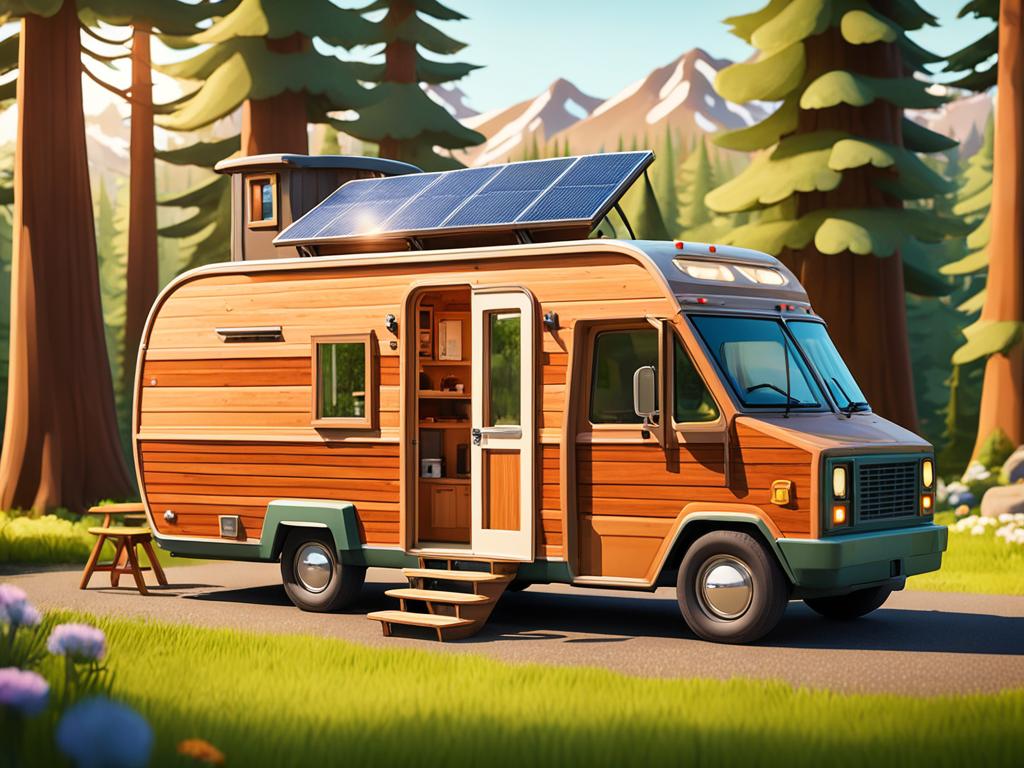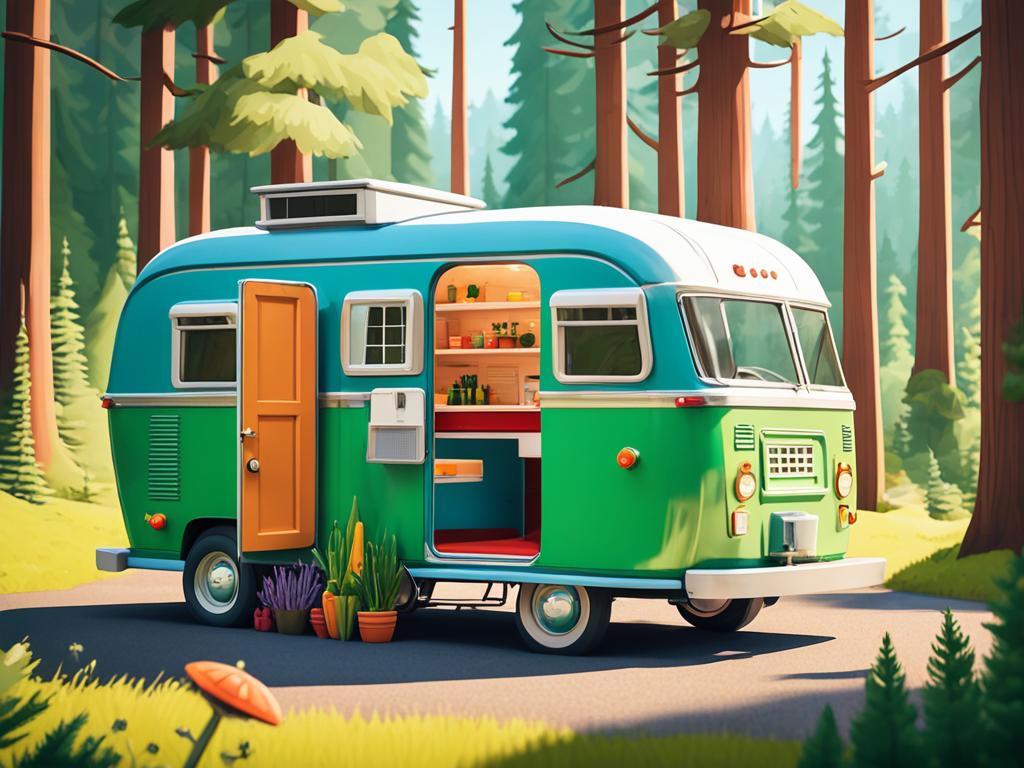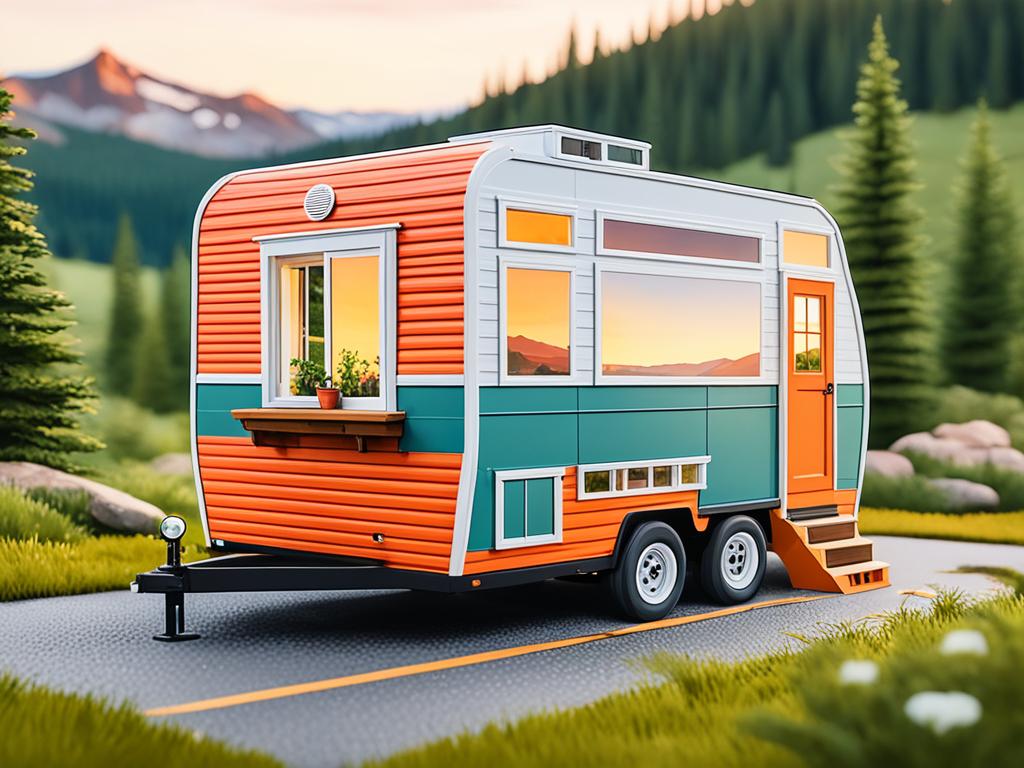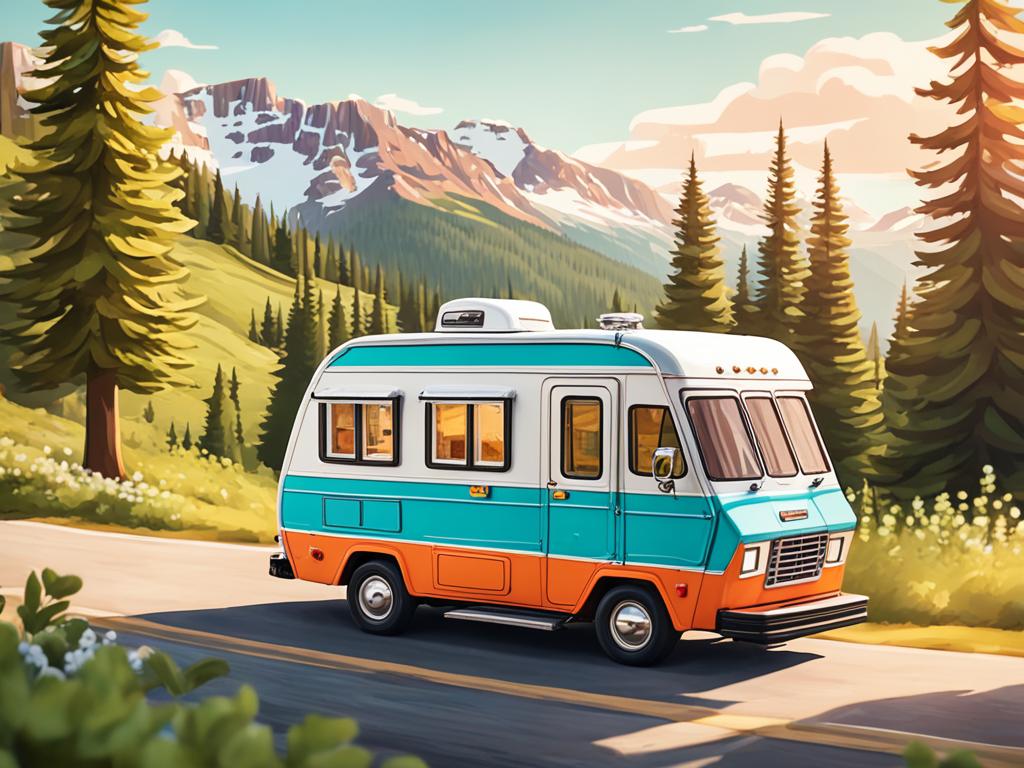Have you ever dreamed of a life on the road, where your home goes wherever you do? Imagine waking up to breathtaking views, exploring new places, and experiencing the ultimate freedom. But how can you make this dream a reality? One answer lies in the world of step van tiny homes.
Step van tiny homes are cleverly converted vans that offer a compact yet comfortable living space. These mobile homes on wheels provide the perfect balance between functionality and mobility, allowing you to embark on exciting adventures while enjoying the comforts of home. But how exactly do you convert a step van into a tiny home? And what are the creative possibilities that await? Let’s dive in and explore the fascinating world of step van tiny home conversions.
Key Takeaways:
- Step van tiny homes offer a unique and flexible way to embrace a minimalist and adventurous lifestyle.
- Converting a step van into a tiny home requires careful planning and consideration of essential elements such as the kitchen, bedroom, and utilities.
- With the right design and storage solutions, a step van can be transformed into a fully functional and comfortable tiny home.
- If you’re inspired to create your own step van tiny home, there are tips and tricks to help you along the way.
- Step van tiny home conversions provide endless possibilities for a life of freedom and exploration on the road.
Step Van Tiny Home Conversions: Creative and Cozy Spaces
When it comes to transforming a step van into a tiny home, the possibilities are endless. These unique conversions showcase the creativity and ingenuity of homeowners who have turned these vehicles into cozy and functional living spaces.
One remarkable example is Putt, a step van tiny home conversion designed by Tyll Hertsens. Putt’s interior is bursting with vibrant colors and features a clever all-in-one layout. With a fully equipped kitchen, a cozy dining area, a comfortable bedroom, and even solar panels for off-grid living, Putt proves that small space living can be both stylish and sustainable.

Another inspiring story comes from Charlie Low and Dale Comley, a UK couple who transformed a former DHL van into a functional and stylish tiny home. Their conversion showcases the versatility of a step van, with a thoughtfully designed layout that maximizes every inch of space. From the compact kitchen to the cozy sleeping area, their van dwelling is a testament to the DIY spirit and the endless possibilities of creating a comfortable home on wheels.
Whether you’re customizing a step van yourself or simply seeking inspiration, these conversions serve as a reminder that small space living can be both practical and inspiring. With a bit of creativity and craftsmanship, you can transform a humble step van into a cozy and functional tiny home that reflects your personal style and sense of adventure.
The Essentials of Step Van Tiny Home Conversions
Converting a step van into a tiny home requires careful planning and consideration. Key elements to focus on include the kitchen, dining area, bedroom, and bathroom facilities. Depending on the size of the van, creative storage solutions are essential to maximise space.
When customising your step van, think about how to create a functional and efficient kitchen area. Consider using compact appliances and clever storage solutions to make the most of the limited space. Install cabinets, shelves, and drawers to keep your cookware, utensils, and pantry items organised. A functional kitchen is essential for preparing meals in your mobile home.
Next, design a comfortable and inviting dining area. Use a foldable table and chairs to save space when not in use. Consider incorporating built-in seating with storage underneath to optimise space and provide extra storage options. This way, you’ll have a designated space to enjoy meals or work on your laptop.
For the bedroom, utilise vertical space by installing a loft bed or a raised platform with storage underneath. Invest in a quality mattress and bedding to ensure a good night’s sleep. Additionally, consider installing blackout curtains or blinds to create a cozy and private sleeping area.
A well-designed bathroom is another essential aspect of a step van tiny home. To save space, consider a wet room design, where the shower, toilet, and sink occupy the same area. Use space-saving fixtures and fittings, such as corner sinks and compact toilets. Don’t forget to include storage for toiletries and towels.
Since a step van lacks the traditional hookups of a regular home, it’s important to ensure your mobile home is equipped with the necessary utilities. Plan and install an electrical system that includes outlets for your appliances and lighting. Consider using renewable energy sources such as solar panels to power your step van. Install a water supply system with a water tank and plumbing to meet your daily needs. And for those cold winter nights, a heating system is essential for comfort, making your tiny home a cozy retreat.
Your Step Van Tiny Home Conversion Checklist:
- Create a functional kitchen area with compact appliances and clever storage solutions.
- Design a comfortable dining area with foldable furniture and built-in storage.
- Maximise space in the bedroom with loft beds or raised platforms with storage underneath.
- Create a well-designed bathroom with space-saving fixtures and fittings.
- Plan and install the necessary utilities including electrical systems, water supply, and heating.

With the right planning and design, a step van can be transformed into a fully functional and comfortable tiny home. By customising your van’s layout and incorporating smart storage solutions, you can make the most of the limited space available. With a kitchen, dining area, bedroom, bathroom, and the necessary utilities, your step van tiny home will provide everything you need for a fulfilling and enjoyable mobile living experience.
Tips for Creating Your Own Step Van Tiny Home
If you’re inspired to create your own step van tiny home, there are several tips to keep in mind:
-
Start by planning your layout and considering your specific needs and lifestyle. Customise the interior design to reflect your personal style and preferences.
-
Research insulation and ventilation options to ensure optimal comfort throughout the seasons. Proper insulation will keep you warm in winter and cool in summer.
-
Optimise storage space by using creative solutions like hidden compartments and foldable furniture. Maximize every inch of your tiny home to keep your belongings organized and easily accessible.
-
Take advantage of natural light by strategically placing windows and skylights. Brighten up your space and create a sense of openness and connection with the outdoors.
-
Consider the legal and safety aspects of living in a converted van. Make sure to comply with relevant regulations and ensure your tiny home meets safety standards.
Creating your own step van tiny home is a rewarding journey that allows you to customise your living space according to your unique needs and taste. With careful planning, innovative design ideas, and attention to detail, you can transform your van into a cosy and functional home on wheels.

Conclusion
Step van tiny home conversions offer a unique and flexible way to embrace a minimalist and adventurous lifestyle. These converted vans showcase the versatility of small spaces and demonstrate that comfort and functionality can be achieved even on the road. With their colorful and cozy interiors, step van tiny homes provide all the essentials for a comfortable living experience.
Whether you’re seeking inspiration or ready to embark on your own tiny home conversion journey, step vans offer endless possibilities. The van to home conversion process allows you to customise your space according to your specific needs and lifestyle, making it a truly personalised and meaningful project.
Imagine waking up to breathtaking views, exploring new destinations, and having the freedom to live wherever your heart desires. A step van tiny home enables you to do just that. Say goodbye to conventional living and embrace the adventure and freedom that van life has to offer. So, start dreaming, get creative, and begin your journey towards a life of exploration and fulfillment in your very own step van tiny home.






Join The Discussion